FREE STANDARD SHIPPING, ALWAYS

17 Tips for Planning The Multicultural Wedding Celebration Of Your Dreams
How to plan the ultimate multicultural wedding, with advice from couples who have navigated planning the big day before!
Posted 7/31/2024
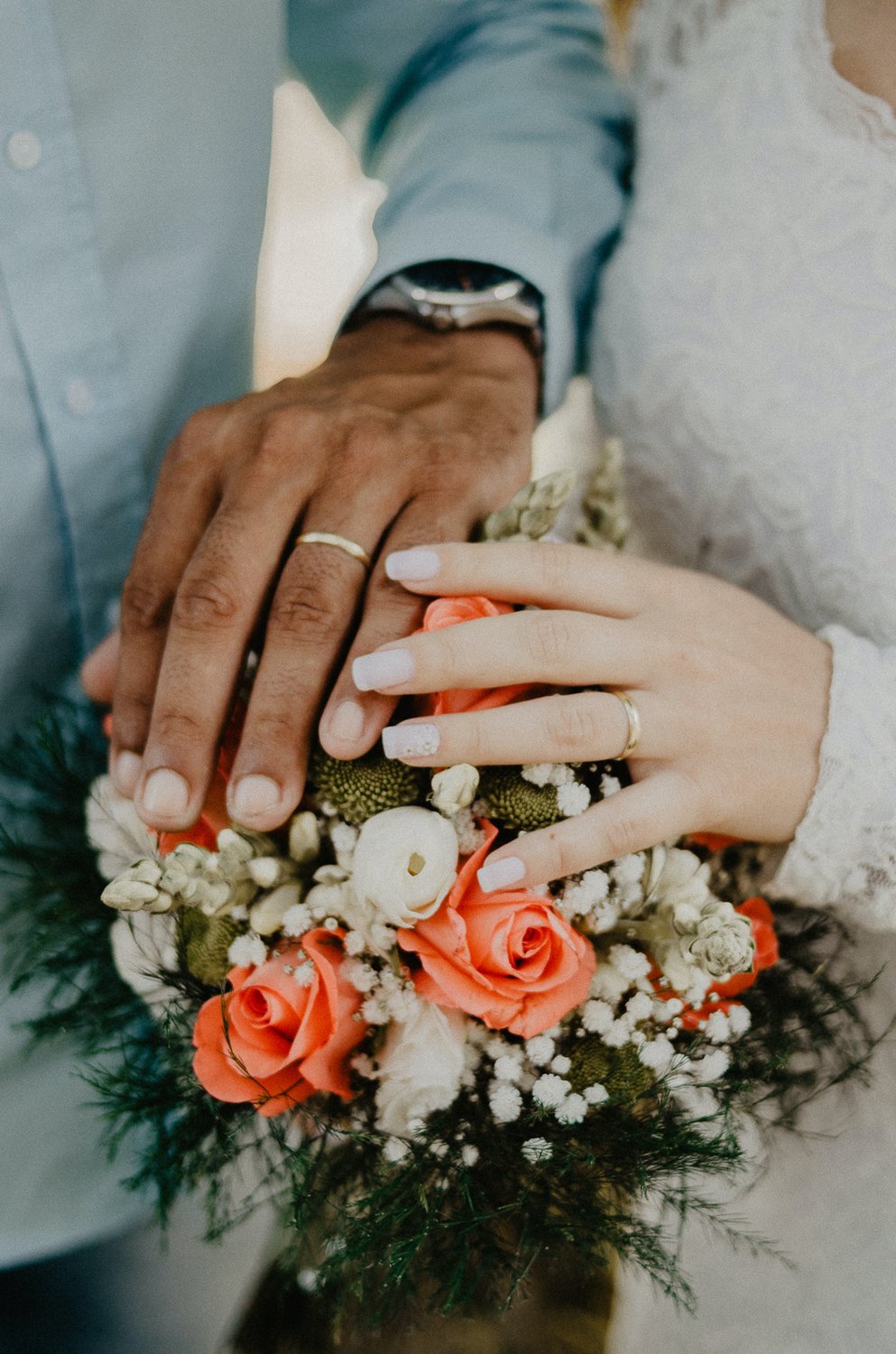
Wedding
You probably know someone who’s navigated the wild ride of a multicultural, interfaith wedding. As couples work to blend their cultures on their big day, couples from different backgrounds face unique challenges when planning their big day.
What Is a Multicultural Wedding? A multicultural wedding is like the ultimate fusion dish: the marriage of two people from different cultural or religious backgrounds.
So, how do couples mix the best elements, keep everyone (mostly) happy, and not break the bank? Very, very carefully. Just kidding! With this advice, including tons of tips from couples who have nailed it themselves, it will all come together beautifully. Hello, epic wedding album.
Talk to Each Other (No, really!)
“The number one tip I can give to anyone coming from different cultural backgrounds and faiths in their wedding planning is to be open with each other about what is important to you and to be receptive to your partner’s desires. Cultural and faith considerations are integral touchstones to a person’s identity, and listening to and being responsive to your partner’s desires around those considerations can make the difference between a terrible wedding day and a truly incredible one,” says Divya, who was born in Chennai, India, grew up mainly in Missouri but considers herself culturally Indian and was raised in the Hindu faith while her husband Tom is culturally American (and also grew up in Missouri, where the couple met) and was raised in the Roman Catholic religion.
“One of the things I appreciated the most about my husband was his willingness to engage with our Hindu wedding events and activities,” she explains. “He was accepting and supportive of everything I was hoping to do, and fully immersed himself in each event. During the wedding ceremony, when we were required to repeat phrases after the Priest in Tamil and neither of us had any idea what we were saying, he was pronouncing the phrases better than myself or my parents! This helped start our married life out on the right note,” she adds.
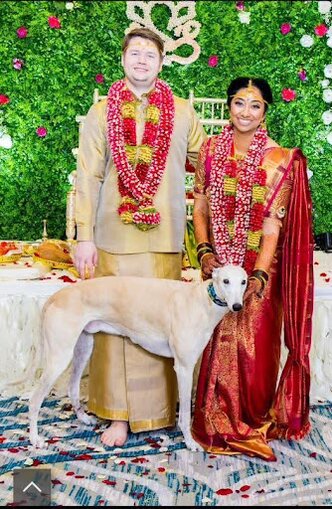
Divya and Tom at their Indian ceremony
Be Clear About Your Wedding Game Plan
To avoid any culture clashes, sit down with each family ahead of time and make sure everyone’s on the same page. Talk about everything from budgets to who’s game (or not) to wear traditional outfits. If you don’t hash out these details, you’re just setting yourselves up for planning disasters.
You may want to add a section on your website or wedding program for guests about ceremony etiquette, including everything from well wishes or phrases that are common in the culture to help people feel comfortable and fit in (especially if your event is being held in another country), anything to avoid doing or saying that may be found offensive (again, a biggie if your wedding will be hosting across the globe) and even what to wear or what not to wear.
The more specific you can get, the better. No one wants to do the “wrong” thing and be embarrassed.
Check with Religious Institutions (and don’t be afraid to call around)
Before you start setting dates or dropping deposits at venues, better check with your religious institutions first. Some officiants are cool with interfaith weddings, while others might be as flexible as a brick wall.
For example, a rabbi and a priest might pull off a ceremony together like a divine duo, but a Catholic priest and a Hindu priest together? You may need two separate ceremonies unless you can figure out how to blend rosaries and reincarnation!
“My husband Spencer’s family is Italian and he was raised Catholic, while mine has strong ties to Ukraine and I grew up very active in my Pentecostal church,” says Alexis Anzmann of Frederick, MD.
“Both of our families had close relationships with the clergy of our churches, and we both wanted these people to be a part of our day. We requested special permission to have my husband’s priest perform part of the ceremony along with my pastor. We submitted paperwork with the archdiocese to allow the priest to perform a wedding that was not taking place in a church," she adds.
"We ended up getting the permission and both of them were able to be there, however, we were required to do premarital counseling for both churches: one Catholics couple, and one Protestant couple. We didn’t mind doing it, we liked seeing the different perspectives. We agreed that we both connected better with the couple from my side, but we’re still happy we did both,” she explains.
“To honor my Ukrainian heritage we had a Ukrainian hand tying element built into our ceremony. It was really special to have such a variety of cultures,” she adds.
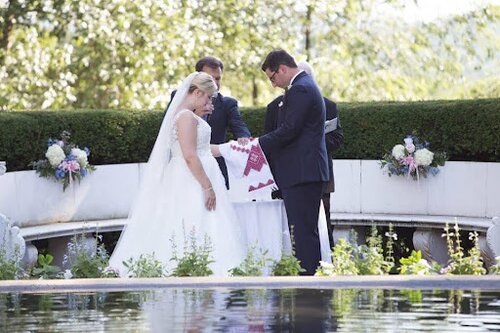
Alexis and Spencer’s Ukrainian hand-tying ceremony; courtesy of Kelly Wylan Photography
Jennifer Lynn Robinson and her husband Walter E. Robinson, Jr. of Ardmore, PA are a great example of not giving up on their dream of having an interfaith wedding ceremony even though they were told no at first. “My husband and I are not very religious, but our religious identity is very important to us,” says Jennifer.
She was raised conservative Jewish while her husband was raised Baptist. “My rabbi would not perform an interfaith ceremony,” she explains. “Other rabbis I contacted at first would only perform the ceremony if we did a separate Jewish ceremony followed by a separate Baptist ceremony. But that's not what we wanted as a couple."
"We stuck to our wishes for the day and eventually found a lovely interfaith rabbi who performed a joint ceremony with the Baptist minister from my husband's church and it was beautiful and everything we wanted. We also had an interfaith ketubah (a Jewish marriage contract) created and signed,” she adds.
Also, don’t forget to check for holy days! Most religions have devotional seasons when weddings are a no-go. You wouldn’t want to plan your big day only to find out you’ve double-booked with a major fast or a sacred holiday.
Embrace Two Separate Ceremonies If Needed
While finding a way to blend your faiths into one ceremony can be incredible, don’t beat yourself up if it’s just not possible. Having separate ceremonies can be just as beautiful and special.
“We held essentially two combined weddings to reflect our different faiths and cultural heritages,” says Divya who got married in Washington, DC and now lives in Baltimore, MD.
“The day before the wedding, we had two traditional Indian ceremonies, the Haldi and the Mehndi. On the day of the wedding, we had two ceremonies. In the morning, we held a traditional Hindu ceremony and reception, and in the afternoon we held a traditional American wedding and reception," she adds.
"Our goal was to have both of our cultures and backgrounds fully represented in our wedding, and I knew that I wanted to have both kinds of ceremonies. The most difficult issue in planning this dual wedding was one of coordination and timing, as well as one of energy. Fortunately, the Hindu wedding festivities and events dovetailed nicely with the American wedding festivities as the former called for events during the days before and the morning of the wedding, while the latter took its usual spot as an afternoon/evening event on the wedding day. This avoided any difficult decisions on which events to hold or skip and allowed our guests (and us) time to change and rest between events,” she explains.
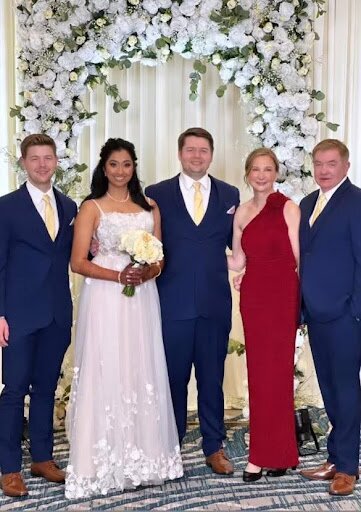
Divya and Tom at their American ceremony
Be Prepared to Compromise
“I’m Italian-Catholic and Lebanese, and my husband is Jewish… We were married by a priest and a rabbi at our catering hall,” says Holly Rizzuto Palker of NYC.
“It wasn’t easy but in order to make the sacrament of marriage in the Catholic Church we attended an interfaith pre-Cana in the diocese of Brooklyn. We promised the priest from my childhood parish that we would do our best to raise the children Catholic. But ultimately we decided to raise them in the reform Jewish faith/movement because they were very accepting of interfaith unions."
"The most stressful thing that happened when we got married was that we argued with my late Jewish mother-in-law because she was upset that we were going to have someone sing Ave Maria at our wedding ceremony. We ended up playing an instrumental version of the song and we had a chuppah and stepped on a glass alongside the priest and rabbi,” she explains.
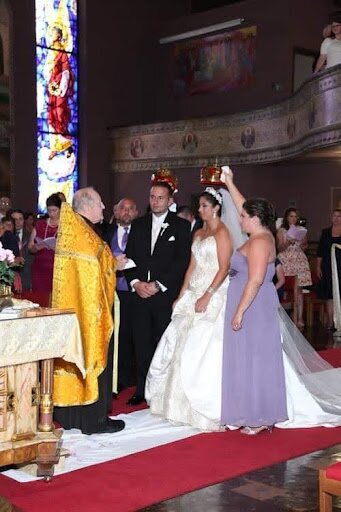
Antoinette and Stevo’s blended Orthodox-Catholic ceremony
“I'm Italian on my mom’s side and Egyptian on my dad’s side,” says Antoinette Moustafa Novakovic of Kennett Square, PA whose husband Stevo Novakovic is Serbian Orthodox.
“My dad was born and raised in Egypt and raised Muslim, while my mother was born and raised in Italy and came to the US when she was 11. My mom’s parents, who were Italian, only spoke Italian and were Roman-Catholic, lived next door to us growing up and took care of us sometimes so I speak Italian and was raised Catholic,” she explains.
“Religion didn't matter to my parents because at the end of the day no matter what you believe in, we are all going to the same place. They raised my brother and I the same way and to not judge people by their race or ethnicity but by who they are as a person. My brother and I were raised catholic, however, our parents made sure we knew both religions, even though there were no Muslim mosques in the area,” she adds.
Her husband Stevo Novakovic was raised Serbian Orthodox (both parents came to the US from Serbia in their 20s).
“In the Orthodox ceremony the bride and groom do not exchange vows, whereas in the Catholic ceremony they do. Since this was not in the ceremony and was important to me, Stevo and I decided to write vows to each other and read each of our vow to each other the day prior. The most challenging part was figuring out how and where we were having the ceremony," she adds.
"We talked to both churches and found out that the Catholic Church would not marry us unless Stevo converted to Catholicism. We both did not want that. The Orthodox Church would accept me as a Catholic marrying an Orthodox without me having to convert and the Catholic Church would still recognize the marriage since it was done in an Orthodox church with Orthodox sacraments. The Orthodox Church just needed to know I was baptized in order to marry there,” she explains.
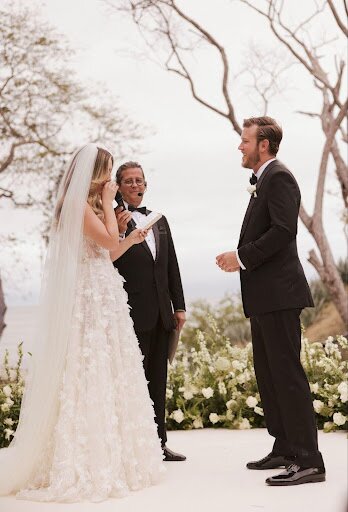
Alexa and Erik being married by Erik’s father in Puerto Puerto Vallarta, Mexico / courtesy of Andrea Camarena
Or, Ask a Family Member to Marry You
And what if you’re not really religious but your family or your fiancé’s family is?
Alexa Watts of Miami, Florida, whose mom is half-Japanese, navigated this when planning her recent Puerto Vallarta wedding:
“I am not religious and my husband Erik’s family is. They're from Guadalajara and Mexico is, you know, a Catholic country. But we just felt like going to a church or having a priest marry us didn't feel natural. So instead we asked Erik's dad to officiate the ceremony and welcomed him to incorporate some of his religious values... he included prayers, blessings and things like that; advice that comes from a more religious standpoint into his speech. That was our way of honoring their Catholic beliefs,” she explains.
Bilingual Vows Are Totally Fine (but help guests out with a translation in the program)
“For my Dominican side, we handpicked a ‘Madrina y Padrino,’ akin to fairy godparents, to guide us into marriage. Our bilingual vows ensured all family members felt included,” says Jadi Boyle of Philadelphia, PA, who is a proud first generation Dominican-American Spanish speaker and whose husband Keegan Boyle comes from a mixed heritage with a strong Irish influence.
Tracey Chang, who got married in China and now lives with her husband in Singapore, chose to speak her vows in both English and Chinese, symbolizing the blending of cultures and ensuring that all guests understand the heartfelt words being exchanged.
“My husband Nate and I are both Chinese from the northern part of China, but he grew up in the UK while I grew up mostly in the United States. So when we were planning our ceremony, we were trying to incorporate our Chinese heritage plus Western influences into our ceremony and reception. And especially certain elements that reflect American and British cultures,” she explains.
“We did the ceremony in Spanish because Erik's dad is a native Spanish speaker and we got married in Mexico,” says Alexa.
“I did my vows in English because even though I speak Spanish since I grew up in Miami, English is my native language and I felt like that was how I was going to tell my story best. Most of our guests understood Spanish, but some didn’t so we also provided a translation in the program so everyone could follow along,” she explains.
Choose Vendors and a Venue That Will Work With You
Many venues have standard wedding packages, and introducing new ideas can be a logistical nightmare. For instance, a lot of ballrooms aren't thrilled about the open flames needed for an Indian wedding—something about fire codes and not burning the place down. And some religious ceremonies take longer than a non-denominational 30-minute ceremony.
“One other tip we can provide is to find vendors that are familiar with weddings from both cultures, particularly the wedding coordinator, or be prepared to have different vendors for each type of wedding,” says Divya. “The food, décor, timing, music and other considerations can prove tricky for vendors that are not experienced with and adapt at handling events crossing culture lines” she adds.
Alexa says “I didn't want to have a beach wedding, but I wanted oceanfront, so I found something that was the perfect in-between… It was literally a piece of land and we could customize it the way that we wanted. We met in LA, but Puerto Vallarta also happens to be the first trip we took together. So it was a special place for us,” she adds.
Get Inspired by Your Unique Heritages
“For my husband's Irish heritage, we embraced the aesthetic: think rolling green hills, historic venues, and a color palette of deep greens, white, and gold. We even included his family's crest in our invitation suite,” says Jadi.
“Remember, even the smallest details matter if they mean something to you. We had little personal touches sprinkled throughout our wedding that told our story,” she adds.
Incorporate Cultural Traditions That Matter to You (and skip the ones that don’t)
Determine what traditions are important to you and your fiancé. When merging styles, not every tradition will be feasible logistically, no matter what parents say. Personalize the ceremony and reception by picking what matters to you, such as a Filipino money dance or Chinese tea ceremony. Not into the bouquet and garter toss? Skip it.
“Weddings are packed with familial expectations, but we focused on what truly mattered to us,” says Jadi. “It was challenging deciding what beautiful traditions to incorporate but ultimately we landed on the ones that felt cohesive and uniquely ours. We chose to skip some traditions that didn’t resonate as much with us, focusing instead on those that truly reflected our shared journey,” she explains. She recommends picking your top three non-negotiables and going all out on those. “Everything else can be a compromise,” she adds.
For Tracey and Nate, they felt including the traditional Chinese tea ceremony was a beautiful way to show respect and gratitude, and honor parents and elders from both sides of their family.
“We honored our different cultures by wearing the ring on the left hand where Orthodox wear their wedding ring on the right,” says Antoinette.
“During the ceremony we wore them on the right and after the ceremony and till present day we wear our rings on the left. We incorporated all the groomsmen wearing sashes that Stevo's grandmother made with the Serbian, Italian and Egyptian flag colors. They wear the flags when bridal parties are all walking together," she adds.
"We also honored both cultures by asking the priest if we could have a non-orthodox person be our Kum ‘the best man’ and a ‘godparent’ for us. Typically in the Orthodox Church the Kum is someone who is Orthodox. He allowed us to have a Kum ‘best man/godparent’ and Kuma ‘maid of honor/godparent’ who were my brother and best friend due to modern times,” she explains.
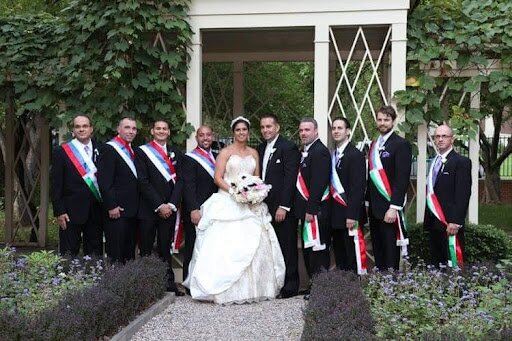
Antoinette and Stevo with their wedding party
“Having a really big entrance is a thing in Mexico so we definitely did that,” says Alexa.
“Be mindful of everyone’s feelings, make concessions, compromise, and know that nothing will be exactly as you imagine it will be,” says Holly. “It is important to hammer out the details and decide what is important with your spouse. Then, each of you should set boundaries with your own families” she adds.
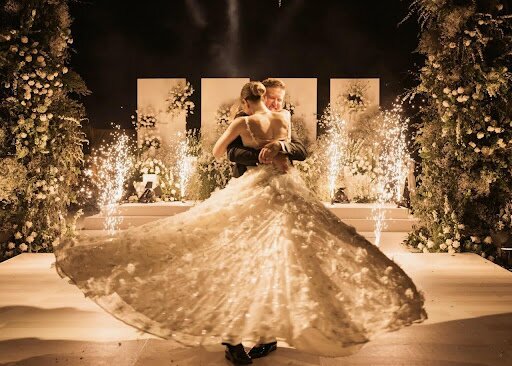
Alexa and Erik’s magical reception entrance (complete with fireworks) / courtesy of Andrea Camarena
Get Creative with the Food and Drinks
Spice up your wedding menu by incorporating specific ingredients or beloved family dishes, and shake things up with specialty cocktails using native ingredients. Seek out restaurants and caterers who are all about fusion ideas and enjoy the brainstorming process.
Alexa’s husband’s brother is a chef so having him do the food for their wedding was a no-brainer: “We served oysters, empanadas, pulpo (octopus)… we wanted to have explosions of flavors. Our drinks were mostly tequila-inspired but we had other drinks, as well.” she explains.
“He proposed the idea of the cake we ended up doing only a few days before! He’s super-creative and likes to give ‘experiences’ with his food. It’s actually an Italian tradition, we just did it the Mexican way! He came out with all the ingredients and Erik and I built it with layers of cream, pastry and fruit while it spun. It ended up being a highlight of the entire wedding,” says Alexa.
Alexa and Erik also did a champagne tower. “We wanted everything to be very interactive,” she explains.
Jadi says they also definitely rocked this on their big day: “During cocktail hour and the reception, a Dominican chef served up traditional dishes with a Latino twist.”
Do YOU When It Comes to Fashion
Don’t be afraid to explore modern twists on traditional dresses from progressive designers and find ways to blend cultures, like wearing a red ball gown for a Chinese wedding.
For brides who need covered shoulders for the ceremony but want to go strapless for the reception, convertible dresses are a game-changer. It's like having a fashion superpower—one minute you're elegant and modest, the next you're ready to dance the night away!
“My dress was from an Israeli designer I’ve loved for years!” says Alexa. “It was definitely more of an American bride aesthetically; Mexican brides tend to do something more conservative and classic. I actually saw another bride in this dress and fell in love. They have a store in Miami and it was the first dress I tried on,” she says.
Although Tracey and Nate got married in China, they chose to incorporate more Western elements: she wore a white wedding dress instead of a red one and he wore a tuxedo.
Tell Your Story With Music and Décor
Add some flair to your wedding with decorations that reflect your culture, like art, sculptures, and furniture, or choose a venue that already has that cultural charm. Chat with your DJ or band about mixing in some traditional music throughout the night and get your guests moving. There's nothing quite like seeing everyone try their hand at a traditional dance and having a blast!
“We had old family pictures of both families playing during the reception and incorporated both Serbian and Italian music, and even played ‘Walk Like an Egyptian,’” says Antoinette (as a playful nod to her Egyptian roots). HA!
“A mariachi band was a MUST for my husband Erick; he loves mariachi and his family and friends love it too. But I personally didn’t want it on our wedding day, so it made sense to do it the night before at our welcome party and it was a good ice breaker for everyone,” says Alexa.
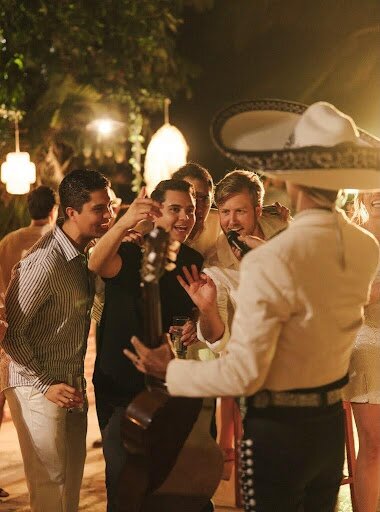
Shots from the mariachi band at Alexa and Erik’s welcome party / courtesy of Andrea Camarena
“For our wedding reception, our DJ was Mexican but he has DJ’d across the world. I knew he could read the room and we worked on the playlist together,” says Alexa. “We actually had calls before to propose songs we both loved. I personally wanted him to throw a more Mexican style party! So we had a lot of Spanish music but with the pops of techno and some classics that everyone can dance to,” she adds.
“From a Hindu wedding perspective, we tried to honor all the time-honored traditions of south Indian culture,” says Divya. “We wanted a traditional approach, even down to the live Indian classical temple music! I think that really made our ceremony feel so wholesome and our guests commented that they felt as if they were in India! For our American wedding, we once again really valued the classic traditions that make an American ceremony so special, and while we did traditional vows with each other, our ceremony was once again altered to really embody who we are as a couple,” she adds.
“Our officiant for the ceremony was one of our closest friends, and the way he honored both sides of our families together in that ceremony and honored our journey together over the past few years was absolutely priceless and to this day we are so grateful for his friendship. The biggest thing I can say is that we were true to the things we love and hold dearly in our lives, and for us that is our doggos! We had our very special Greyhound pup Piper at both ceremonies (see pics attached)! I grew up with a dachshund named Badger who had a larger than life personality, and while he unfortunately passed before our ceremony, we had an amazing artist from Springfield, MO paint my favorite picture of him, and he was there by our sides during the ceremonies as well,” she adds.
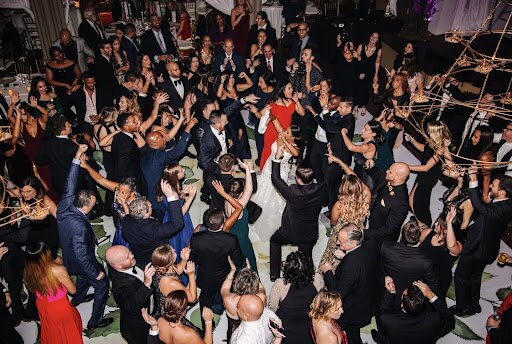
Jadi and Keegan’s dance party / courtesy of Lauren Cowart Photo
“From the start, we knew our wedding had to be a beautiful reflection of both our cultures. Incorporating Irish aesthetics was a joy, with deep greens, lush florals, and golden accents setting a timeless scene,” says Jadi.
“My Dominican heritage shone through in the food, music, and bilingual ceremony, making sure everyone felt welcomed and celebrated. Our DJ kept the dance floor alive with a mix of genres that had everyone dancing all night long. Watching the dance floor come alive was next level. Not a single slow song was played. My husband and I danced all night, and our energy was contagious—the crowd fed off it, making the night unforgettable,” she adds.
Even though her dad doesn’t speak English (only Chinese) Tracey chose an American country song for her father-daughter dance (she went to college in the midwest). She also did a fun outfit change and performed a special dance—with backup dancers—for her new hubby. So fun!
Consider Hiring a Planner and/or Day-of-Coordinator
Not only for unique ideas but also as a confidant. Parents often do not fully understand the wedding customs. As a bride, it's nice to have an ally on your side, a credible source, to back up your ideas and help families understand why they work.
“I am very type A, so I knew that I needed someone who spoke the same language and we felt that through the right wedding planner, we would get the result that we wanted. And we did,” says Alexa.
“I highly recommend creating a mood board and don’t be afraid to use examples from what your wedding planner has done before. Also communicate what you don’t want because sometimes wedding planners default to cookie cutter stuff. I had a very clear vision of what I wanted. Your wedding day is not to please anyone else. It’s for you and your husband. Be true to yourself. Enjoy it. Don’t worry about other people!” she adds.
“A day-of coordinator was an absolute lifesaver for us,” says Jadi and Divya agrees: “Our wedding coordinator, Neha of Seven Rings Events, did a fantastic job helping us to set a timeline and keep everything moving on time,” says Divya.
Consider Skipping the Tradition of Letting the Bride’s Parents Pay, Too
“Have a conversation about what’s important to YOU. Not what your families want, do what is right for you,” says Holly.
“Funding the wedding ourselves was key—it let us make decisions that reflected our desires without familial financial pressures,” says Jadi. “This decision allowed us to blend our heritages seamlessly.”
Don’t Forget to Have Fun
“Our favorite part of the wedding was the reception, and in particular the dancing after the dinner was finished. My husband and I love to dance with each other, and dancing is a large part of Indian culture (see Bollywood movies for reference!). He has always enjoyed dancing and so it was fantastic to spend the night bouncing between Indian and American hits and dancing together, with our friends, and having a grandiose time on the dance floor while looking like a pair of fools in love,” says Divya.
Don’t Expect Perfection
Just like a regular wedding… things will probably go wrong. Add in layers of complication, and there are more chances they may. So be prepared to roll with the punches.
“Ironically, my favorite memory was from a blunder,” says Holly. “We got married in a garden outside an old mansion and as I was walking down the stone steps at the beginning of the aisle with my father, my veil got caught on the rocks and I was jerked back. Everyone laughed and it just felt so fitting of us. There were several things that didn’t go according to plan on the day, but it didn’t matter, we were just so excited to be married,” she adds.
Whether you're hosting an interfaith wedding or celebrating multiple heritages, we've got you covered. With these tips, you’ll master the art of planning a multicultural wedding and merging cultures for your big day. Think of it as throwing a party for the United Nations—but with more dancing, fewer boring speeches, and way better food!
Readers are loving
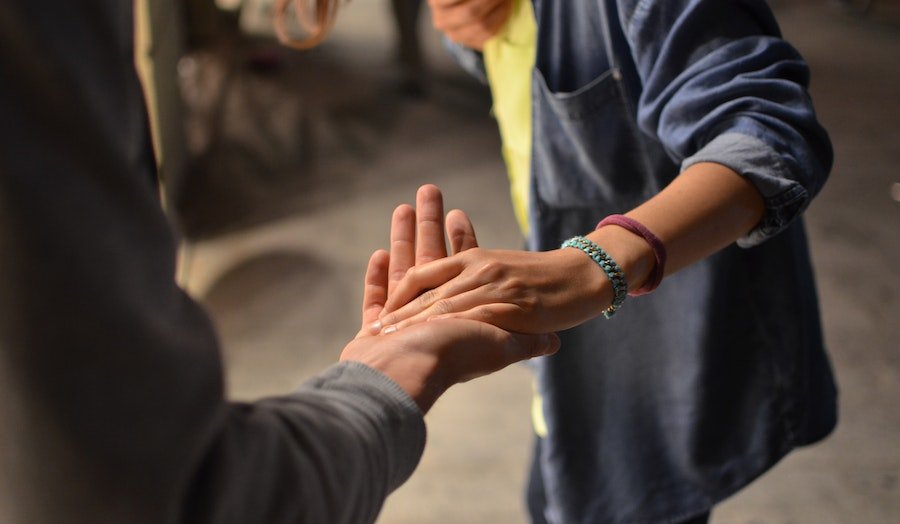
51 Best Goodbye Quotes
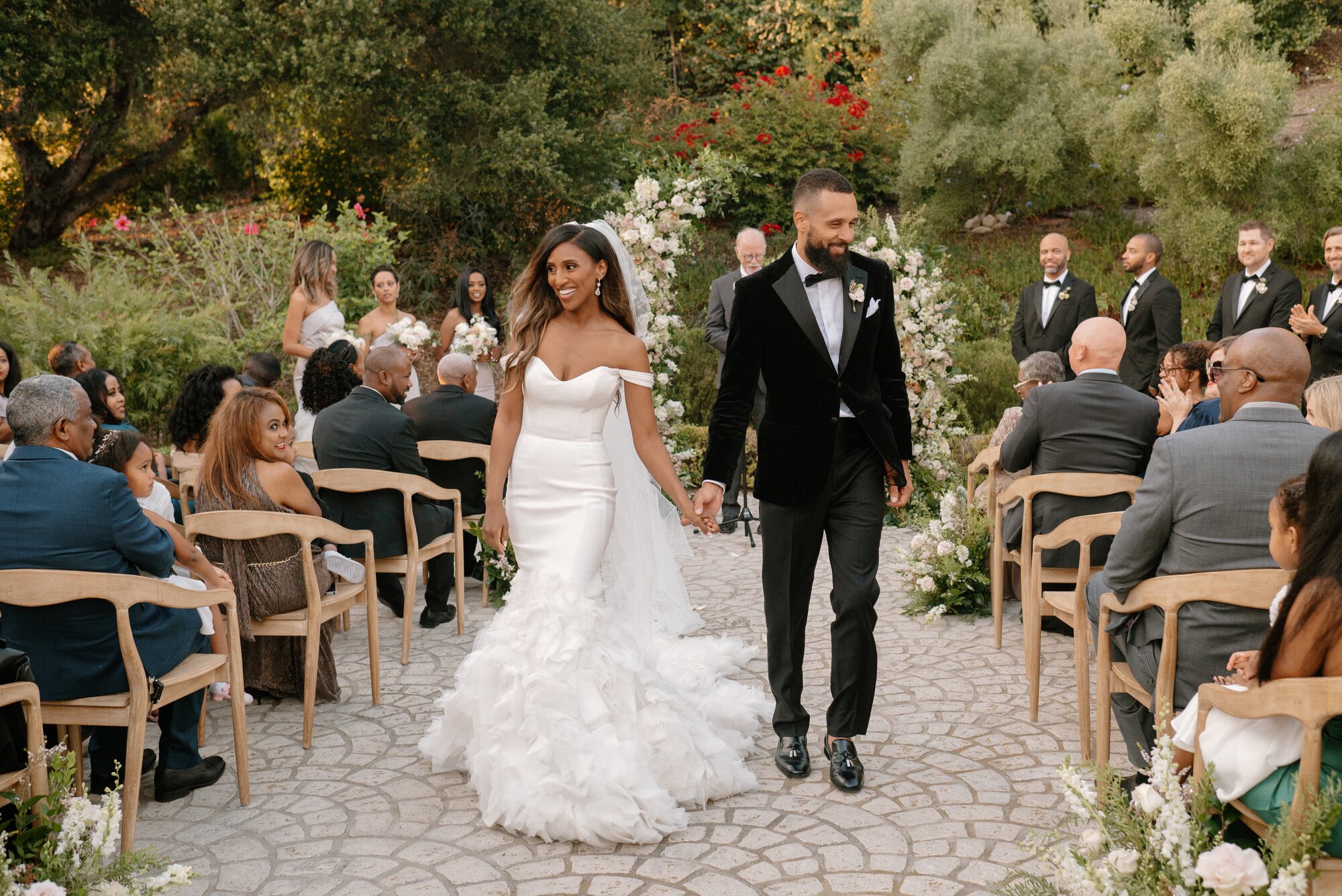
How Much to Tip a Wedding Photographer
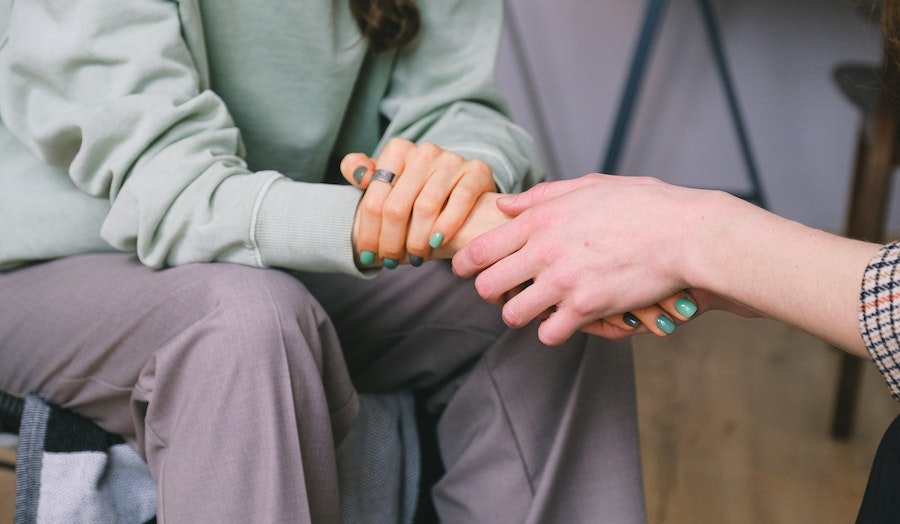
65 Sympathy Messages To Use In a Condolence Card